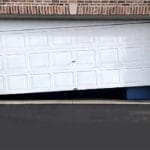Yes, a range hood can be vented through the soffit, but it is not recommended. Venting through the roof is the best option for optimal performance and to avoid potential issues like moisture buildup and mold growth.
Range hoods are an essential component of any kitchen as they help to remove smoke, steam, and odors from the cooking area. However, it is important to ensure that they are properly vented to ensure optimal performance. While venting through the soffit is an option, it is not the best one as it can lead to moisture buildup and mold growth.
Venting through the roof is the best option as it helps to ensure proper ventilation and avoids potential issues. We will explore the different ways to vent a range hood and the pros and cons of each method.
Range Hood Venting Fundamentals
Importance Of Proper Ventilation
Proper ventilation is crucial for a range hood as it helps to eliminate smoke, steam, and odors from the kitchen, ensuring a healthier indoor environment. Inadequate ventilation can lead to the accumulation of moisture, which may cause mold growth and other potential issues. By venting the range hood properly, you can maintain a clean and comfortable kitchen space.
Types Of Range Hood Venting
There are mainly two types of range hood venting: ducted and ductless. Ducted venting involves directing the air and fumes outside the home through a duct system. This is the most effective method for removing cooking byproducts. On the other hand, ductless venting utilizes a filtration system to purify the air before recirculating it back into the kitchen. While ductless venting is easier to install, it may not be as efficient as ducted venting in removing airborne pollutants.

Credit: m.youtube.com
Understanding Soffit Venting
Soffit venting plays a crucial role in the proper ventilation of a home. When it comes to the installation of a range hood, understanding soffit venting is essential to ensure efficient and effective ventilation. This includes comprehending the role of soffits in home ventilation and weighing the pros and cons of soffit venting.
Role Of Soffits In Home Ventilation
Soffits serve as an essential component of a home’s ventilation system, facilitating the flow of air to maintain proper air circulation and prevent moisture buildup. They are located under the eaves of the roof and are designed to provide ventilation to the attic space and the roof. Soffits allow fresh air to enter the attic, pushing out hot, moist air to maintain a balanced and healthy environment.
Pros And Cons Of Soffit Venting
When considering soffit venting for a range hood, it’s important to weigh the advantages and disadvantages. One of the main advantages is that venting through the soffit can be a more discreet option, as the ductwork is hidden from view. Additionally, soffit venting can minimize the length of the ductwork, reducing the risk of airflow restrictions and increasing the efficiency of the ventilation system.
However, there are also drawbacks to soffit venting. Soffits are closer to the ground, which may lead to potential obstructions such as landscaping or snow accumulation, affecting the airflow. Additionally, if not properly installed or maintained, soffit venting can allow moisture to enter the attic space, leading to issues such as mold growth and structural damage.
Soffit Venting For Range Hoods
Yes, a range hood can be vented through the soffit, but it’s not always recommended. While it’s a viable option, venting through the roof is generally considered the best practice for optimal performance and to prevent issues like moisture buildup and mold growth.
Feasibility Of Soffit Venting
When it comes to venting a range hood, one popular option is through the soffit. The soffit is the underside of the eaves or roof overhang, and it provides a convenient location for venting the range hood. Venting through the soffit can be a feasible solution in certain situations.
One of the main advantages of soffit venting is that it allows for a shorter and more direct duct run compared to venting through the roof or an exterior wall. This can help to minimize the amount of ductwork required and make installation easier.
Additionally, venting through the soffit can be a good option if the range hood is located on an exterior wall where venting through the wall is not practical. It can also be a suitable choice for homes with limited roof access or for homeowners who prefer not to cut a hole in their roof.
Potential Complications
While soffit venting can be a viable option, it is important to consider potential complications that may arise. One common concern is the risk of re-ingesting the vented air back into the attic or living space. This can occur if the soffit vent is located too close to an intake vent, allowing the expelled air to be drawn back in.
Another complication is the potential for moisture buildup and condensation. Soffit venting may not provide adequate airflow to dissipate moisture from the range hood, which can lead to the growth of mold and mildew in the attic or eaves. It is crucial to ensure proper ventilation and insulation to prevent these issues.
Furthermore, some building codes and regulations may restrict or prohibit venting through the soffit. It is essential to check with local authorities to ensure compliance with regulations and to avoid any potential issues or penalties.
In conclusion, while soffit venting for range hoods can be a feasible option in certain situations, it is important to carefully consider the potential complications and adhere to local building codes. Consulting with a professional installer or HVAC technician can help determine the best venting solution for your specific needs.
Building Codes And Soffit Venting
Venting a range hood through the soffit is possible, but it’s important to consider building codes and soffit venting regulations. While it may be allowed in some areas, others may require venting through the roof to ensure proper ventilation and prevent issues like moisture buildup and mold growth.
Always check local building codes before making a decision.
Code Requirements For Range Hood Venting
Building codes play a crucial role in ensuring the safety and functionality of residential structures. When it comes to venting a range hood, it’s important to adhere to these codes to avoid any potential issues.
In accordance with building codes, range hoods must be vented to the outside of the home. This allows for proper ventilation and helps remove smoke, steam, and odors from the kitchen. While there are different options for venting, such as through an exterior wall or the roof, some homeowners may consider venting through the soffit as a convenient alternative. However, it’s essential to understand the code requirements and why soffit venting may not always be compliant.
Why Soffit Venting May Not Be Code Compliant
Although venting through the soffit may seem like an attractive option, it may not always be code compliant. Here’s why:
1. Moisture Buildup: Soffit venting can potentially lead to moisture buildup in the attic, which can result in mold growth and other issues. Building codes often require soffits to be vented to ensure proper attic ventilation and prevent these problems.
2. Grease and Odor Accumulation: Venting through the soffit can cause grease and odors to accumulate around the exterior of the home. This can be unsightly and may create a nuisance for neighbors.
3. Fire Safety Concerns: Soffits are typically located close to the ground, which raises concerns about fire safety. Venting a range hood through the soffit may increase the risk of fire spreading to the attic or neighboring structures.
4. Inadequate Airflow: Soffit venting may not provide sufficient airflow for the range hood to function optimally. This can result in reduced efficiency and inadequate removal of smoke, steam, and odors from the kitchen.
It’s important to consult local building codes and regulations before deciding to vent a range hood through the soffit. In many cases, venting through the roof or an exterior wall is the preferred and code-compliant option. By following the guidelines set by the local authorities, homeowners can ensure the safe and efficient operation of their range hoods while adhering to the building codes.
Alternative Venting Solutions
Yes, a range hood can be vented through the soffit, but it’s not always the best option. Venting through the soffit may lead to issues like moisture buildup and mold growth. It’s typically recommended to vent the range hood straight up through the roof for optimal performance and to remove odors from the kitchen.
Venting Through Roof Or Wall
When it comes to venting a range hood, the most common solutions are through the roof or wall. Venting through the roof involves running ductwork from the range hood up through the attic and out through the roof. Alternatively, venting through the wall involves running ductwork from the range hood to an exterior wall and installing a vent cap on the outside.
Best Practices For Range Hood Exhaust
Regardless of which method of venting you choose, there are some best practices to keep in mind for range hood exhaust. Firstly, it’s important to choose the right size ductwork for your range hood, as using a duct that is too small can reduce the efficiency of the exhaust. Secondly, it’s recommended to keep the duct run as short and straight as possible, as bends in the ductwork can reduce the effectiveness of the exhaust. Finally, it’s important to regularly clean and maintain your range hood and ductwork to prevent the buildup of grease and other debris that can reduce the effectiveness of the exhaust.
In addition to venting through the roof or wall, there are alternative venting solutions such as venting through the soffit. While venting through the soffit may be possible, it is generally not recommended as it can lead to moisture buildup and potential issues with mold growth. It’s always best to consult with a professional when considering alternative venting solutions for your range hood.
Installation Tips For Soffit Venting
When it comes to venting a range hood through the soffit, it is generally not recommended. Venting through the roof is the best option for optimal performance and to remove smoke, steam, and odors from the kitchen. Venting through the soffit can lead to issues like moisture buildup and mold growth.
It is important to follow the manufacturer’s installation guidelines for the best results.
Tools Required
To vent a range hood through the soffit, you will need the following tools:
- Drill
- Screwdriver
- Circular saw or jigsaw
- Tape measure
- Caulk gun
- Hacksaw
Step-by-step Installation Guide
Here is a step-by-step guide on how to vent a range hood through the soffit:
- Installation Prep: Before you start, ensure that the power to the range hood is turned off. Measure the distance between the range hood and the soffit to determine the length of the duct needed.
- Where to place the vent: Mark the center of the vent location on the soffit. Use a circular saw or jigsaw to cut a hole in the soffit for the vent. Be sure to follow the manufacturer’s instructions for the size of the hole needed.
- Duct Sizes: Measure the diameter of the duct connection on the range hood and the vent opening on the soffit. Use a duct that matches the size of both connections.
- Applying a bead of caulk: Apply a bead of caulk around the edge of the vent opening on the soffit. This will help to prevent any air leaks.
- Mounting the Vent: Attach the vent to the soffit using screws and a screwdriver. Be sure to follow the manufacturer’s instructions for the proper installation method.
- Attaching the Hose: Attach the hose to the range hood and the vent using clamps. Tighten the clamps with a screwdriver to ensure a secure connection.
- Cutting the pipe to length: Cut the duct to the appropriate length using a hacksaw. Be sure to leave enough slack in the duct to allow for movement of the range hood and for easy cleaning of the duct.
Remember, venting a range hood through the soffit is not always recommended, and it is important to check local building codes to ensure compliance. With these installation tips, however, you can successfully vent your range hood through the soffit and enjoy a cleaner, more comfortable kitchen.
Maintenance Considerations
It is possible to vent a range hood through the soffit, but it is not recommended as it can lead to moisture buildup and potential mold growth. It is better to vent straight up through the roof for optimal performance and to remove smoke, steam, and odors from the kitchen.
Cleaning And Upkeep
Maintaining a range hood that is vented through the soffit is essential to ensure its proper functioning and longevity. Regular cleaning is necessary to remove grease, dust, and other debris that can accumulate over time. Cleaning the exterior of the range hood and the vent cover can be done using a mild detergent and a soft cloth. For the interior components, such as the filters and ductwork, it is recommended to refer to the manufacturer’s instructions for specific cleaning guidelines.
Additionally, it is important to inspect and clean the ductwork regularly to prevent any blockages or obstructions that can hinder the ventilation process. This can be done by removing the vent cover and using a vacuum cleaner or a brush to remove any buildup of dust or debris. Keeping the ductwork clean and free from obstructions will help maintain optimal airflow and prevent any ventilation issues.
Monitoring For Ventilation Issues
Regular monitoring of the range hood’s ventilation performance is crucial to identify any potential issues and address them promptly. Here are a few key aspects to consider when monitoring the ventilation:
- Check for proper airflow: Ensure that the range hood is effectively capturing and removing smoke, steam, and odors from the kitchen. If you notice a decrease in airflow or lingering smells, it may indicate a clogged filter or ductwork that needs cleaning.
- Inspect the vent cover: Regularly inspect the vent cover for any signs of damage or blockage. Obstructions such as bird nests or debris can hinder the airflow and should be promptly removed.
- Listen for unusual noises: Unusual noises coming from the range hood, such as rattling or vibrating sounds, can indicate loose or damaged components. Addressing these issues promptly can prevent further damage and ensure proper ventilation.
By regularly cleaning and monitoring the range hood’s ventilation performance, you can ensure its optimal functionality and maintain a clean and odor-free kitchen environment.
Expert Opinions On Soffit Venting
Expert opinions vary on whether a range hood can be vented through the soffit. While some building codes require vented soffits for proper attic ventilation, others recommend venting straight up through the roof for optimal performance and to prevent issues like moisture buildup and mold growth.
It’s important to follow the manufacturer’s installation options and consult with a professional to ensure compliance with local building codes.
Expert Recommendations On Soffit Venting
When it comes to venting a range hood, one of the common questions that arises is whether it can be vented through the soffit. To shed some light on this topic, we have gathered expert opinions from professionals in the industry. Here are their recommendations:
Professional Recommendations
According to experts, venting a range hood through the soffit is not the most ideal solution. While it may seem convenient, there are several reasons why professionals suggest avoiding this method. Here are some key points to consider:
1. Moisture and Odor Buildup: Venting through the soffit can lead to moisture and odor buildup in your attic or crawl space. This can result in mold growth, which can be harmful to your health and the structural integrity of your home.
2. Inefficient Airflow: Soffit venting can restrict the airflow of your range hood, reducing its effectiveness in removing smoke, steam, and odors from your kitchen. This can lead to poor indoor air quality and an uncomfortable cooking experience.
3. Potential Fire Hazard: If the range hood is not properly vented through the soffit, it can increase the risk of a fire hazard. Grease and other particles may accumulate in the ductwork, increasing the chances of a fire starting.
4. Building Code Compliance: Many modern building codes require soffits to be vented for proper attic ventilation. Venting a range hood through the soffit may not comply with these regulations, which could lead to issues when selling or insuring your home.
Case Studies And Real-life Examples
To further emphasize the importance of proper range hood venting, let’s take a look at some real-life examples and case studies:
1. In a study conducted by a reputable home improvement magazine, it was found that homes with range hoods vented through the soffit had higher levels of indoor air pollutants compared to homes with proper roof venting.
2. Several homeowners who initially vented their range hoods through the soffit reported issues with excess moisture in their attic spaces. This resulted in costly repairs and the need for additional ventilation measures.
3. One homeowner shared their experience of having to replace their range hood due to poor performance caused by soffit venting. After switching to a properly vented system, they noticed a significant improvement in air quality and cooking efficiency.
In conclusion, while it may be tempting to vent a range hood through the soffit for convenience, it is not recommended by experts. Proper roof venting is the preferred method to ensure optimal performance, prevent moisture buildup, and comply with building codes. Consider consulting with a professional to determine the best venting solution for your specific kitchen setup.
Frequently Asked Questions
How To Vent Range Hood Through Soffit?
To vent a range hood through the soffit, follow these steps:1. Install a soffit exhaust vent. 2. Determine the appropriate duct size. 3. Plan the installation and mark the location. 4. Apply caulk and mount the vent. 5. Attach the hose and cut the pipe to the desired length.
It is generally not recommended to vent through the soffit, as it is better to vent straight up through the roof for optimal performance.
Does A Range Hood Have To Vent Through The Roof?
No, a range hood doesn’t have to vent through the roof. It can be vented through the soffit. Venting through the soffit helps remove smoke, steam, and odors, providing optimal performance. It’s important to follow building codes for proper ventilation and consider professional installation.
Is It Ok To Vent Through The Soffit?
Yes, it is okay to vent through the soffit, but it’s not always the best option. Venting through the roof is recommended for optimal performance and to prevent potential issues like moisture buildup and mold growth. Always consider the manufacturer’s installation options for the best results.
Where Should A Range Hood Be Vented?
A range hood should be vented to the outdoors, ideally through an exterior wall or the roof. Venting through the soffit is not recommended due to potential issues with moisture buildup and grease accumulation. It’s important to follow manufacturer’s installation guidelines for optimal performance.
Can A Range Hood Be Vented Through The Soffit?
Yes, a range hood can be vented through the soffit. It’s a common alternative to venting through the roof.
Conclusion
Venting a range hood through the soffit is a topic that sparks debate among homeowners and professionals alike. While it may seem like a convenient option, there are several factors to consider. Proper ventilation, code requirements, and potential issues like moisture buildup and mold growth should all be taken into account.
Ultimately, it is recommended to consult with a professional and follow manufacturer’s guidelines for the best and safest venting option for your range hood.





